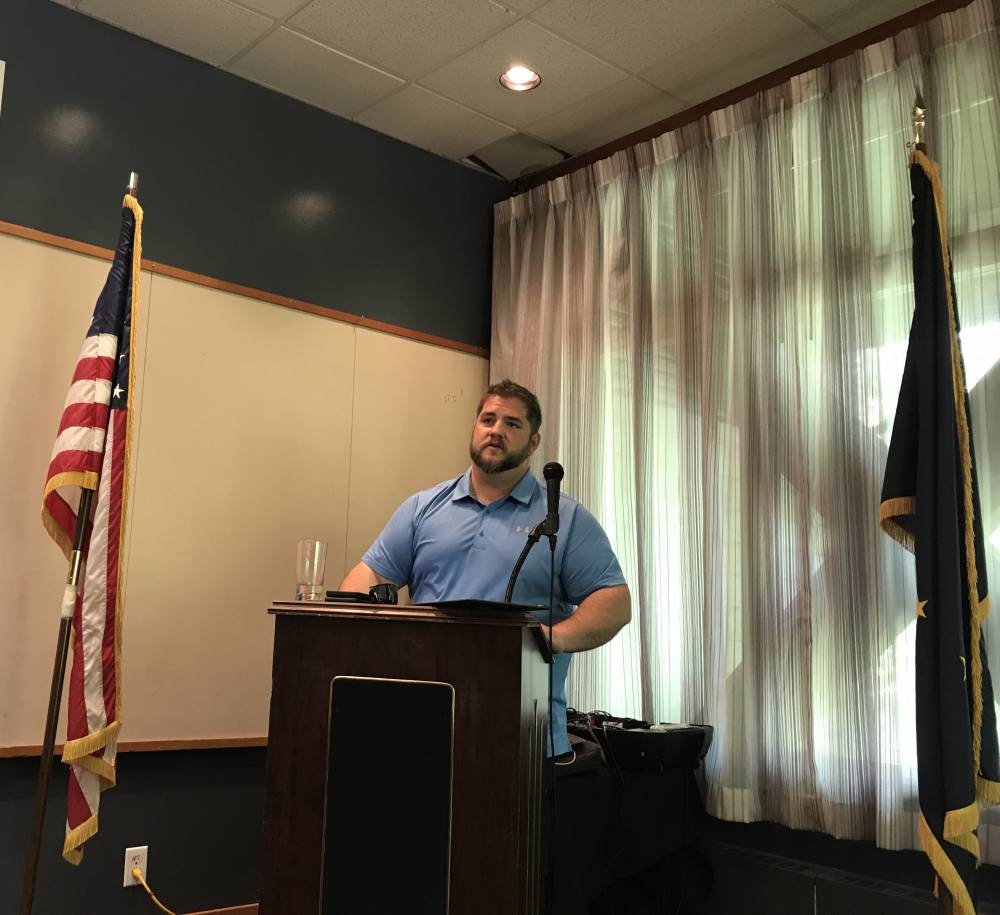
Commissioner Adam
Crum from the state Department of Health & Social Services recently visited
local health providers. He also presented a discussion on Medicaid during a
recent Ketchikan Chamber of Commerce luncheon.
Governor Mike Dunleavy’s
budget includes cuts to the state’s Department of Health & Social Services.
Commissioner Crum discussed potential service changes due to the funding
decrease, specifically to Medicaid.
“The current path of
state spending on Medicaid and health care in general is unsustainable,” said
Crum. “As many of you know, Alaska has the highest health care costs in the
nation. The Health Care Cost Institute actually shows that Anchorage—these
major cities—is 65% above the national average for health care costs. That’s
just Anchorage. So as you get further away from that—from the hubs into these
smaller communities, those numbers actually go up even more,” Crum said.
Crum said Medicaid
serves 216,000 Alaskans; almost one-third of the population. But he said
they’re taking a phased approach to the new budget changes. They exempted
critical access hospitals, primary care providers, and federally qualified
health centers from the 5% funding reduction. The department has the ability to
reduce Medicaid cost by implementing rate adjustments, service utilization,
program administration adjustment, and eligibility. So far, they have only
implemented the first three options.
“The idea is that
Medicaid program dollars, both combined state and federal, will be used to pay
health plan premiums and cost shared requirements for those moving into the
marketplace,” said Crum. “Medicaid will act like a secondary payer for those
transitioning into the marketplace, ensuring medicated enrollees with private
coverage will still have access to services such as long-term care and
behavioral health.”
The department is
working with Public Consulting Group to determine whether moving portions of
the Medicaid population into the federally facilitated marketplace will save
the department money. The restructuring should benefit eligible Medicaid
enrollees by connecting them to private coverage. Populations that will remain
with Medicaid include the medically fragile, citizens with incomes below 50% of
the central poverty level, those on dual Medicare/Medicaid, incarcerated individuals
and those recently released from prison; and aged, blind, and disabled
enrollees.
Crum said the goals
of the restructuring plan aim to rebalance the current behavioral health system.
“Intervene as early
as possible in the lives of Alaskans to address behavioral health early warning
signs before symptoms cascade into functional impairment, and improve overall
behavioral health—and improve the overall behavioral health system
accountability by reforming the existing system’s care,” said Crum.
Crum said all current
eligibility criteria will remain the same and no one will lose access to
coverage. He hopes this will ease the transition. Public Consulting Group
should complete their report within the next month and it will be public
record. Changes based on the analysis of a waiver won’t be implemented without
community input and stakeholder engagement.
Crum said the changes
will attract new insurance providers and increase competition among insurers to
possibly lower the cost of health care in Alaska. However, there is concern
this may not help private insurance holders. Brittany Pope is the owner of Be
Well Counseling. She says when considering private practices that primarily use
private insurance, the department needs to look at more than just cost
containment, but also expense containment for the practitioner.
“I think specifically
Medicaid budget cuts affect practitioners because you’re not going to get
highly qualified practitioners here when you cannot pay a competitive wage,”
Pope said. “And also when you can’t get licensed in the state and you have all
the barriers that the state put up with that, you’re talking about expanding
services, you’re actually not expanding services because you’re cutting rates.
So I think that—that correlation right there of cutting, you’re going to limit
access to resources too.”
She
said failing to decrease the cost and expenses will result in fewer providers.
Rita
Menzies is a nurse with three sons. One of them has a rare seizure disorder and
autism. Menzies said she’s concerned about the health and social services
budget because it impacts her son’s ability to attend daily living activities
at Community Connections and could lead to additional health issues.
“One of my
observations is that with the lack of day-hab services, our kids and loved ones
are going to have a lack of physical activity and socialization, which will
then predispose them to diabetes, depression, obesity, and heart disease,” said
Menzies.
In
response to Menzies’ comment, Crum says they will continue to look for day-hab
solutions.
“We’re
going to continue to look at that. I can just say personally, my heart goes out
to those groups as well and those families to try to help as much as possible,”
said Crum. “So this is going to be an ongoing conversation and if we can’t do
it around our current roles, perhaps we can get creative and find something
that’s going to work on this. But it’s going to be an ongoing talk.”
